
The Rustic Roots of Mid-Century Modern
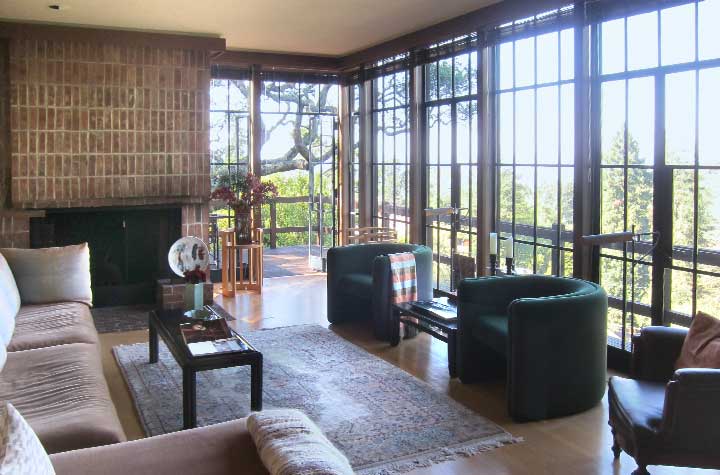 |
People who live in glass houses who have an interest in history often think about the architects, designers, and thinkers who influenced the architects who designed mid-century modern homes for Joe Eichler, the Streng Brothers, and others.
The Bauhaus school comes to mind; Frank Lloyd Wright, of course, who was a direct influence on Eichler; and architect Richard Neutra.
But how about the Pasadena bungalow builders Greene and Greene? Or John Ruskin, for that matter, the 19th century theorist who pioneered the Arts & Crafts Movement?
Sure, at first glance the styles can look very different, bungalows all cozy and brown, modernism so often cool and sleek.
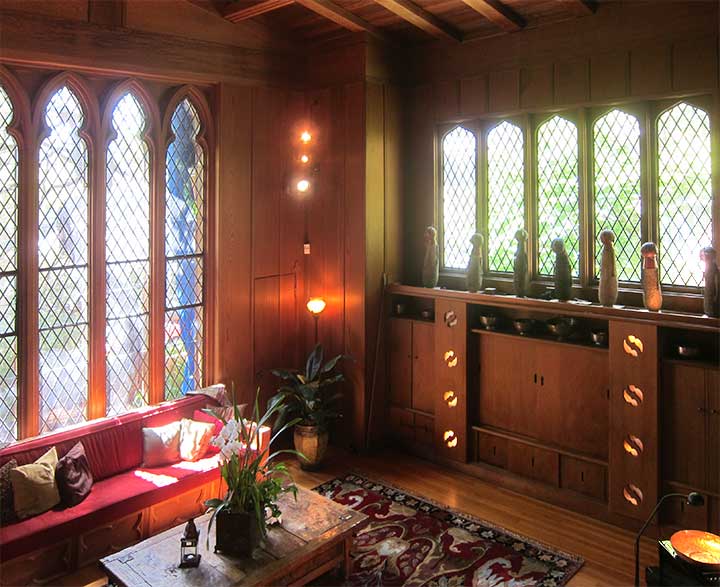 |
In fact, the links between Craftsman and Modern design are strong and direct, tied to the Socialist, often utopian-tinged ideology behind many practitioners of both styles, the honest use of materials, avoidance of excess ornamentation, and a focus on nature.
Indeed, there were architects – Wright among them – whose work falls into both categories. It can be argued that the work of Joe’s architects, and that of Carter Sparks, who designed modern tracts for the Strengs, do the same.
It’s an issue with real world implications. Are Eichler owners who white-out their original mahogany paneling inadvertently destroying a quality of the home that is rooted in this shared heritage?
To consider that, let’s look at several, varied streams that fed into the birth of mid-century tract homes, some that were birthed in Europe, others right here in the Golden State.
Ruskin, one of the originators of the Arts and Crafts Movement in England, founding the Guild of St. George in 1871, tied the aesthetic to social betterment, hoping to improve the lot of the working man, among other causes.
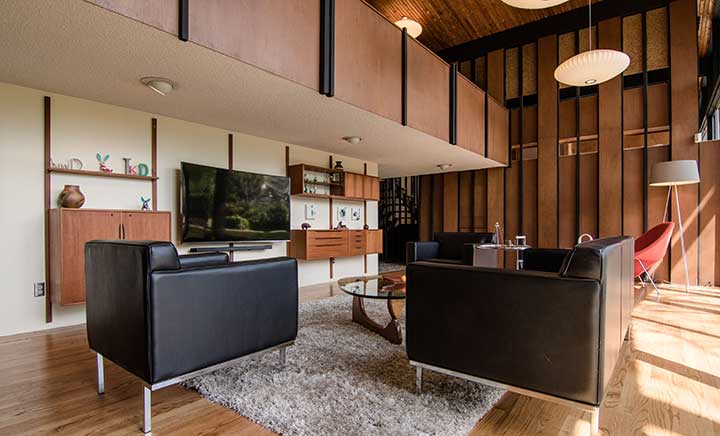 |
Honest handmade crafts should replace polluting industry, and cottages should be built for working for laborers. Both in Britain and the continent, and in America with Wright, many of the early Arts and Crafts architects could be seen as proto-modernists as well -- Voysey, Edwin Lutyens, Adolf Loos, Charles Rennie Mackintosh.
While many of their homes stuck to, or more properly, played with, traditional forms, including at times steep gables and half timbering, many had large windows open to the out of doors, approached open-planned interiors, and incorporated gardens for outdoor living and sleeping porches.
In California, Bernard Maybeck and other Northern California architects created proto-modern designs that came to be called the 'First Bay Tradition.' Mid-century modernists of the Second Bay Tradition often paid explicit homage to their predecessors, whose paths they sometimes crossed in real life.
The Southern California architectural team Greene and Greene, credited with the invention or at least popularization of the Craftsman Bungalow, incorporated much they had learned from Asia into their designs.
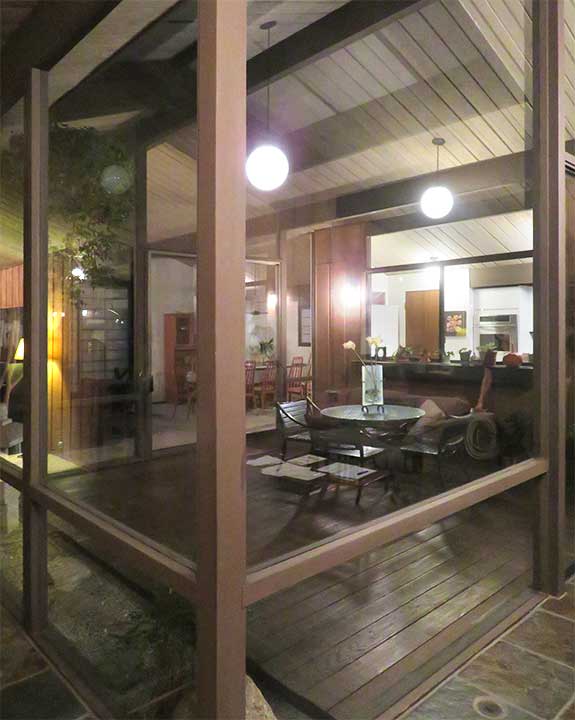 |
In some ways, Pasadena Heritage docent David Nufer has said, mid-century modernism was a “continuation of Arts and Crafts” after a hiatus of 30 years. In a 2021 talk about ‘The Asian Roots of Pasadena’s Arts and Crafts Architecture,’ Nufer showed an image of an Eichler atrium, as he discussed how Asian influence penetrated California through the work of early 20th century Craftsman designers.
Many mid-century modern architects loved Asian architecture because of its relation to nature, its simplicity, and the way its posts and beams expressed the structure of a building, Nufer said.
Low-slung, early California ranches, with their outdoor passageways and rooms arrayed around courtyards, also played into modern residential design starting in the 1920s.
Development occurred separately in at least two places. In Southern California, Cliff May, innovative and modern by nature, designed rambling homes of a Spanish Colonial bent that were all about blending indoor-outdoor living.
Up north, architect William Wurster, who would go on to create UC Berkeley’s College of Environmental Design, created modern ranches of his own, his style evolving into pure modernism in later years.
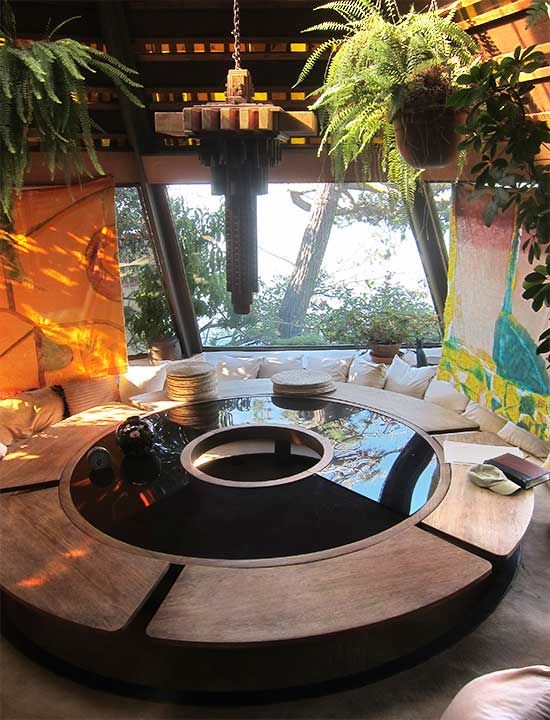 |
Wurster’s Gregory farm house, built in the hills above Santa Cruz in 1928, was a simple, apparently informal, arrangement of low-slung living spaces around a courtyard, vernacular in a way – yet with the architect’s casual elegance. Wurster went on to design similar homes in the golf course development of Pasatiempo.
What made these homes modern was their simplicity, lack of pretension, and indoor-outdoor living areas. Many were collaborations with landscape architect Thomas Church.
'Second Bay Tradition' architects often took inspiration from barns – you see many such modern homes at the Sea Ranch– as part of their interest in informal vernacular designs.
At another talk for Pasadena Heritage, 'Greene and Greene Meet Post War Modernism,' Ted Bosley discussed an important Japanese concept that was crucial to both Arts and Crafts designers and the modern designers we are discussing here: Shibui, an aesthetic that seeks not to amaze or overpower, but to express “simple unostentatious beauty.”
- ‹ previous
- 576 of 677
- next ›



